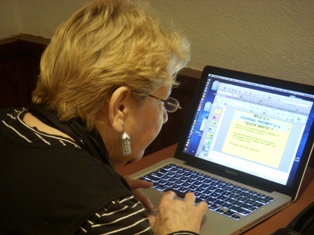Hello Teachers: More arts / academic activities! Here are 3 more projects involving art, music and academic content. You can choose any of them to use with your students. None of these are in the UNO books. They are supplemental activities to support your work!
ACTIVITY 7
TITLE: «Photosynthesis»
MATERIALS NEEDED: Two plants of the same kind for each team
TO STUDENTS: Photosynthesis is a big word but one that you probably know.
PHOTO means LIGHT. SYNTHESIS means putting things together.
In class, your teacher probably has already explained photosynthesis. Today your team will begin an experiment that will last for a month. You will also do some artwork.
BEGIN THIS PROJECT ON A MONDAY.
- Photosynthesis is the process of plants using light to manufacture (make) sugar which plants use for their energy. Without light, plants eventually die.
- Each team will have 2 plants that are alike in size and type. (Each team can have a different type of plant.)
- Both plants will receive the same amount of water.
- One plant will be placed on a windowsill or table where there is natural light and some sunlight.
- The other plant will be placed in a cabinet or closet where it will NOT receive any light.
- On the next four Fridays, check the plants. Draw a picture each Friday of how each plant looks. Use a sheet of paper with a line drawn down the middle, and divided in four horizontal sections on each side = 8 sections to draw in: 4 for the plant in the light, and 4 (1 for each week) for the plant in the closet.
- Discuss your findings with the class and teacher.
Now, you will never forget what photosynthesis is.
FACT OF THE DAY
Who was the first person to figure out that the Earth revolves on an axis and orbits around the sun?
- Nicolaus Copernicus (1473-1543), a Polish astronomer
- INVESTIGATE: Long before Copernicus, a group of people in Mexico observed and calculated similar findings. Who were they? What did they discover? What did they do?
=========================================================
ACTIVITY 8
TITLE: «Making Music»
MATERIALS NEEDED: A variety of items that can be used to make musical sounds: combs, glass bottle with water inside, rattles, metal triangles, sandpaper blocks, tambourines, harmonica, etc.
TO STUDENTS: When you were in Kindergarten did you play with rhythm instruments? They were fun, weren’t they? Now that you are older, you are able to make your own musical instruments. Using any items available that can make sounds, even a pencil tapping on the table, you will make some music. A simple small comb, with a piece of waxed paper over it, can be used to make a humming sound. BE CREATIVE!
If your teacher can get a CD, or an Internet recording, of a song called «Alexander’s Rag Time Band», it has the exact type of rhythm that you can use to play your instruments.
Listen to the CD once , and then play it again, this time with all of you keeping time to the music using your home made instruments…
This is an easy, but fun activity. The song, «Alexander’s Ragtime Band» has words.
Sing along with the words as you play your instrument.
============================================================
Here are the words to the chorus of ALEXANDER’s RAGTIME BAND.
Can you find out who wrote this song? When? What other things can you find out about the composer?
Come on and hear, come on and hear, Alexander’s Ragtime Band. Come on and hear, come on and hear, It’s the best band in the land! They can play a bugle call like you never heard before. So natural that you want to go to war. That’s just the «bestest band what am, honey lamb. Come on along, come on along, Let me take you by the hand. Up to the man, up to the man, Who’s the leader of the band! And if you care to hear the Swanee River played in ragtime, Come on and hear, come on and hear, Alexander’s Ragtime Band!FACT OF THE DAY
Who was Ada Byron Lovelace?
- She was an English mathematician and scientist who wrote the first computer program.
====================================================
ACTIVITY 9
TITLE: »The 3 vital functions of a human body»
MATERIALS NEEDED:
- 4 sheets of paper for each student
- colors or markers
- Internet access
TO STUDENTS: The human body has three vital functions. Do you know what they are?
These 3 functions are the most important ones for humans life.
They are: nutrition, the nervous system and reproduction. You will make an illustrated report about these 3 vital (important) functions.
Use the first sheet of paper to make a cover for this report. The next 3 sheets will be used to make a written, illustrated report about the three functions.
Use Internet, label each page, show a chart, graph, or drawing to illustrate your report.
Remember: «A picture is worth 1,000 words», so make attractive pictures to support your report.
FACTS OF THE DAY
All the colors that we see are made up of three primary colors. What are they?
- Red, green, and blue
Paint colors are NOT the same as colors from light. The primary paint colors are….???
- Yellow, red, and blue… When they are mixed together, you get black.
_______________________________
